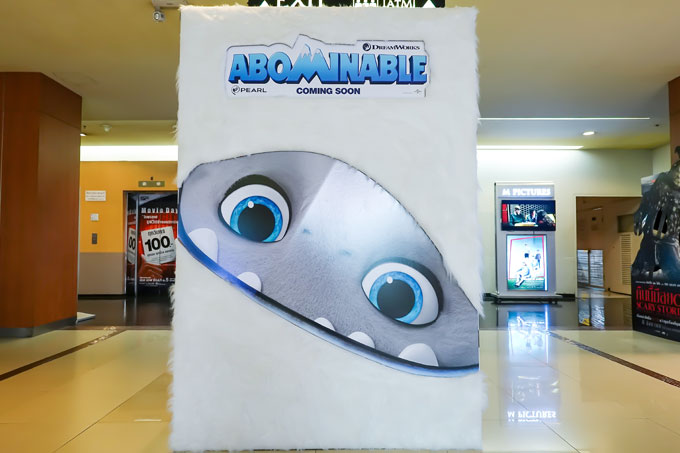Professor Peter Vujakovic explains why a map in the new animation film, Abominable, is causing controversy.
It is not often that an animated film aimed at children hits the headlines as a source of geopolitical provocation. However, this is exactly what has happened with the latest production from the world-famous DreamWorks Animation studio. Known for such movies as Shrek, Kung Fu Panda and How to Train your Dragon, its new release Abominable has raised the hackles of several states bordering the South China Sea (SCS).
The map appears to be incidental to the film’s narrative, but its very existence in this high-profile production has reportedly caused Vietnam to ‘pull’ the movie and calls for it to be boycotted in the Philippines.
The film about Yi, a Chinese girl who rescues a baby yeti, has been made with a growing Chinese audience in mind and is a co-production with Pearl Studio of Shanghai. The controversy hinges on a shot of a wall-map of China hanging in a hide-away that Yi has built on the roof of her apartment block. It shows what has become know as the U-shaped line or so-called ‘nine-dash line’ that represents China’s claim to a large part of the SCS. The U-shaped line is also contemptuously known as the ‘cow’s tongue’ by its opponents.
Originally drawn as an eleven-dash line in 1947 by the nationalist government (adopted by the People’s Republic in 1949), two dashes were removed following an agreement with Vietnam of a maritime boundary in the Gulf of Tonkin in 2000, reducing the number to nine. Latterly a tenth dash was added to the east of Taiwan. This final manifestation courted controversy when it was subtly included as part of the map of China in passports in 2012; the Philippines and Vietnam protested, branding the new design a violation of their sovereignty.
Why the controversy? The maritime area contained within the U-shaped line is vast and overlaps with the claims of several other states. It includes zones with potential oil and gas resources, as well as rich fisheries. Much of the issue is linked to contested islands and shoals, such as the Spratleys and Paracels, ownership of which could allow a state to claim a 200 nautical mile Exclusive Economic Zone (EEZ). China’s construction of ‘islands’ by building up reefs and adding infrastructure, for example, the controversial air strip on Fiery Cross Reef, has fuelled the concerns of other states.
The ‘nine-dash’ version was made famous as part of a Chinese response to the UN in protest at a Malaysian-Vietnam submission to the Committee on the Limits of Continental Shelf. China has been clever in its use of the line. Its meaning remains ambiguous and open to interpretation. According to the US Department of State, “China has not clarified through legislation, proclamation or other official statements the legal basis or nature of its claims associated with the dashed-line map.”
An astute use of strategic ambiguity and gestalt psychology, it uses reification, the mental process of ‘bringing into being’ (characteristic of many visual illusions), to allow the reader to fill in the gaps between the widely spaced dashes, reinforcing a sense of solidity.
The map in Abominable may simply be an innocent representation of one of the contents of a typical Chinese child’s bedroom or hide-away, but it has reminded us of the power of maps.
Peter Vujakovic is Professor of Geography. He has written extensively on maps and geopolitics, including a recent research paper on the western news media coverage of the U-shaped line. He is co-editor with Dr Alex Kent of The Routledge Handbook of Mapping and Cartography.
 Expert comment
Expert comment Jeanette Earl
Jeanette Earl 2553
2553


